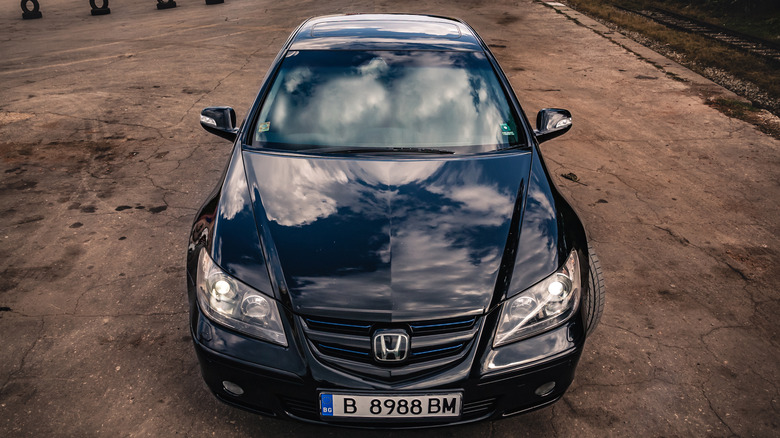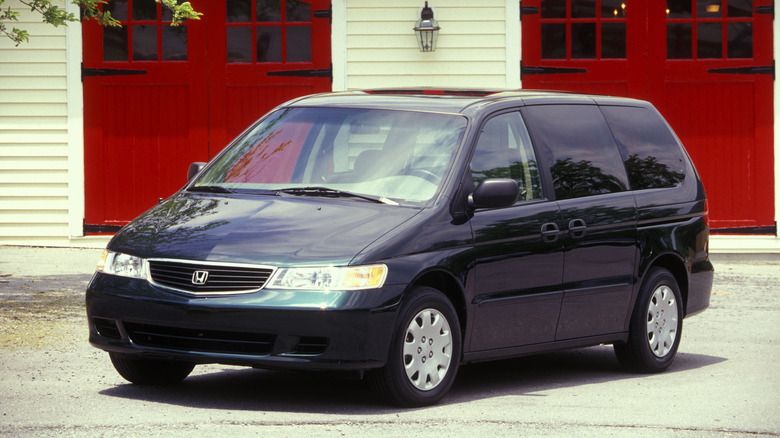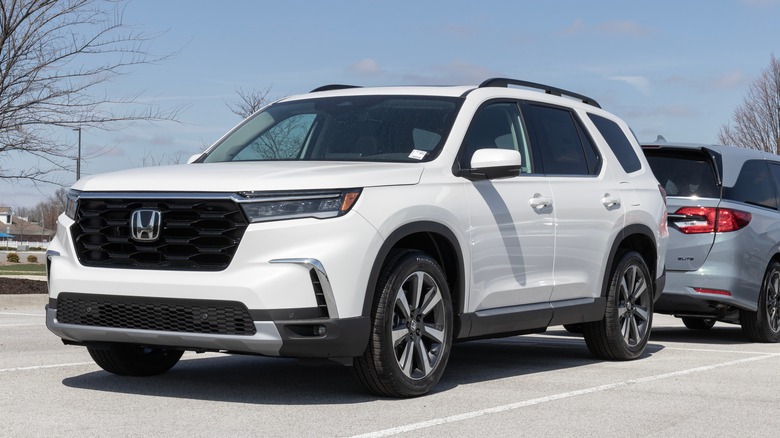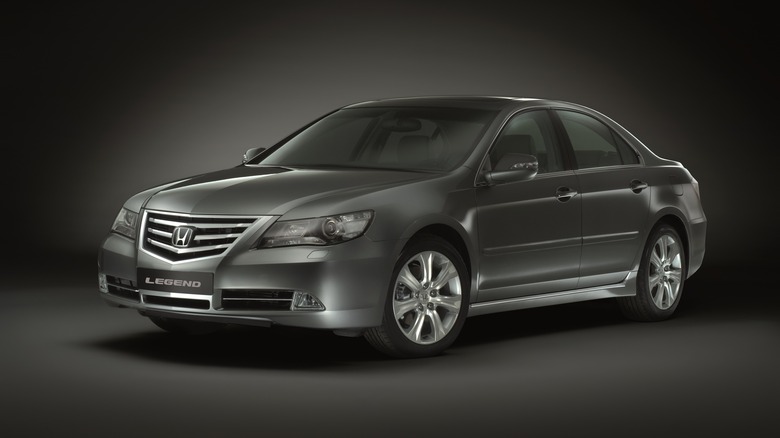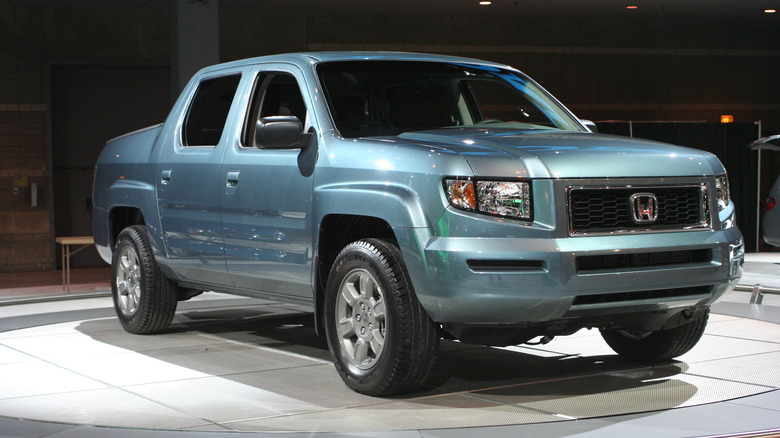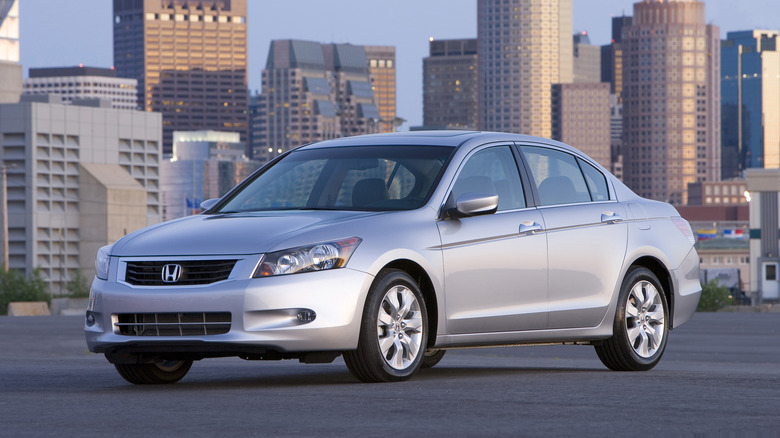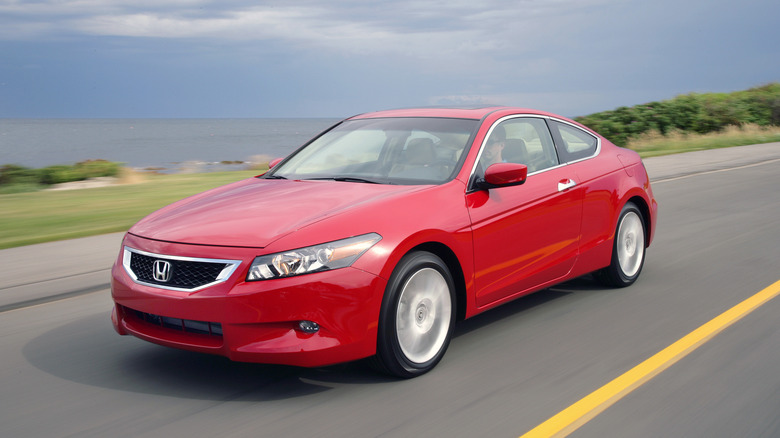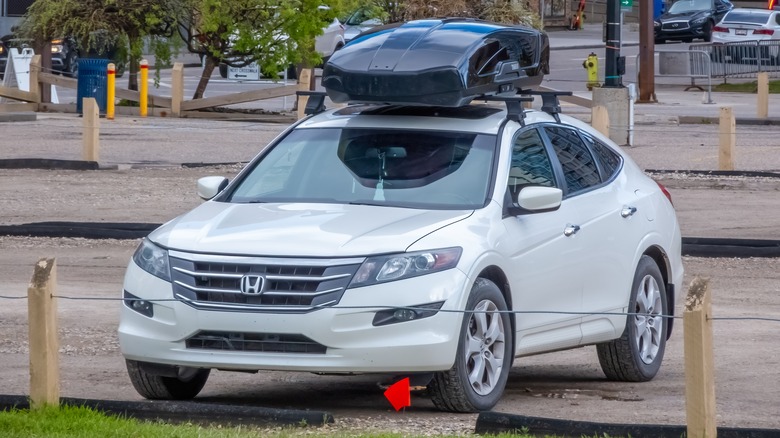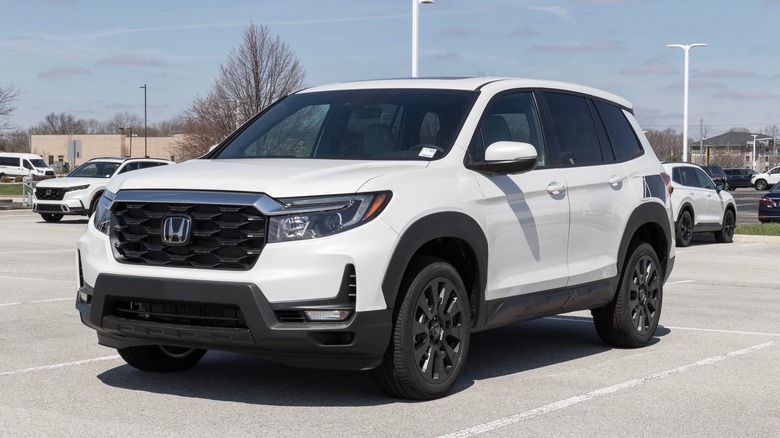Every Honda Model Powered By The J35 Engine
Honda has a reputation in the car community — quite an ambiguous reputation, actually. Some enthusiasts are outspoken haters of Honda because they're tired of teenagers in old Civics waking them up in the early hours of the morning. Others are absolutely enamored with Honda because they have made some truly great cars, enthusiast-oriented and otherwise.
If there's one thing we can't deny about Honda, it's how good the company is at making engines. Honda's powertrains have been used as tuning platforms for decades, and even though the automaker is good at making four-cylinders, it is also quite proficient at the V6, even though it hasn't been doing it for nearly as long. Some of Honda's engines are also complete horsepower juggernauts. One of the most enduring members of Honda's V6 family is the J35, which has done service in more than a fair share of Hondas for over 15 years.
Honda Odyssey
We can't talk about the J35 without mentioning the first Honda vehicle in North America that carried it. The J-series V6 was the effective replacement for the C-series, and the first production Honda to be powered by a J series motor was the second generation of one of North America's most ubiquitous minivans, the Odyssey, introduced in 1998 for the 1999 model year.
The previous generation Odyssey used a four-cylinder, so with the V6, there was plenty of additional power and performance, certainly more than enough to transport all the things you might want to transport in a minivan. It was actually the most powerful V6 in a minivan at the time, with 210 hp and 229 lb-ft of torque.
Despite it being a thirsty NA V6 at its core, the Honda Odyssey still managed to earn a low emission classification, which goes to show the engineering talent at Honda. The J35 also has two other things in common with other Honda engines: for one, it features VTEC, and two, it's fairly bulletproof.
Honda Pilot
Even though Honda is hard at work on electrifying its models as much as the next automaker, some of its cars in North America still use a good old-fashioned V6. While the CR-V embraces hybrid and even hydrogen power, the latest Pilot still uses the good old J35.
Granted, in the latest Pilot, the J35 is pretty significantly different compared to the J35 units that preceded it. The major difference is the lack of VTEC, and also the dual overhead camshaft design, which Honda hasn't worked with since the original NSX.
The latest Pilot develops 285 hp and 262 lb-ft of torque, pretty solid numbers for not having any sort of forced induction. It will also undoubtedly help with the utility side of things, as the Pilot aims to target buyers who want a more off-road capable family SUV with the TrailSport trim level. The Pilot is also packed with a bunch of other cool features.
Honda Legend
While the second generation Odyssey was the first Honda branded vehicle in the States and Canada to be powered by the J35, it wasn't the first actual Honda to carry any sort of V6 powertrain. The Legend, which would be North America's introduction to premium sister company Acura, was actually the first ever production Honda to use a V6 engine. Yes, even before the NSX.
Of course, the earliest Legends used the C-series V6, and it would take until the fourth generation Legend for the J-series V6 to take its place. Of course, by this point, Acura had long abandoned the Legend name, renaming this generation to the RL.
Still, it was called the Legend all over the rest of the world. As this was the flagship model, Honda turned up the wick on the J35 V6, giving it 291 hp. It still used a single overhead camshaft and VTEC, but in the Legend/RL, it was paired exclusively with AWD. The fourth generation Honda Legend was highly misunderstood by consumers worldwide, which is why Honda didn't really bother with a global release for the next few generations, save for the Acura version in the States and Canada.
Honda Ridgeline
If there's one thing that almost always flies in the North American automotive market, it's gotta be a pickup truck. However, Honda somehow managed to make a pickup truck that didn't really fly, despite the fact that the original Ridgeline pioneered a unibody construction that still includes an integrated ladder frame, as well as mating the cab and bed together.
Pickup purists were not exactly thrilled with the Ridgeline's daring to be different and innovative, which is why it went under the radar. Looking past its innovations, the Ridgeline still is a pickup at its heart, and what a heart. The J35 V6 powered every first generation Ridgeline, putting out 255 hp and 252 lb-ft of torque. Peak torque came in pretty late for a pickup, at 4,500 rpm, but the Ridgeline was still a very capable midsize truck, being able to haul 1,550 lbs in the bed and tow up to 5,000 lbs, which are still respectable figures even to this day.
Honda Accord / Inspire
While Honda's quirky stuff certainly has a cult following, it didn't let the more ordinary stuff in their lineup get barred from the J-series V6. The Accord was, and still is, practically synonymous with Honda and the generic family sedan, alongside the Toyota Camry. As we all know, Japan and America's Honda Accords were vastly different, with the latter getting a reworked version of what was known in Japan as the Honda Inspire.
The American market Accord was larger, better appointed, and it was much more in line with what Americans were looking for. Naturally, the J35 V6 made an appearance here too, making the eighth generation Accord the first one to use it. It put out 268 hp and 248 lb-ft of torque, which reached the wheels through a five-speed auto box. Honda also focused a lot on fuel efficiency, adding cylinder deactivation tech to the J35 for this application.
Honda Accord Coupe V6
Even though the Honda Accord has long been associated with being the standard issue family sedan (remember when those were still a thing?), Honda didn't forget about its loyal enthusiasts, and it gave them something a little special. For those who wanted more performance than a Civic, but more daily usability than, say, an S2000, the Accord Coupe V6 was the answer.
Remember when family sedans had coupe versions? Good times. The Accord Coupe V6 used the same architecture, but it obviously lost two of its doors and gained some more svelte styling as a result. The J35 V6 under the hood was very similar to the one in the regular Accord, featuring cylinder deactivation tech, and of course, VTEC.
But it had a little bit more power, and one very important distinction: this was the only way you could pair the V6 with a manual transmission in the Accord. With a sonorous NA V6, a manual transmission, and a gorgeous coupe body, the Accord Coupe V6 deserves more appreciation. If anything, that's simply because — in the present day — we have exactly none of those things.
Honda Accord Crosstour
We can't really fault Honda for thinking the solution for a market crazy about SUVs is something that combines the good qualities of an SUV, a hatchback, and a regular sedan. However, the love-it-or-hate-it Accord Crosstour, later renamed to just the Crosstour, was a complete and utter sales flop, and not many people remember it.
The problem with the Crosstour was, while it combined all of those seemingly great elements into one car, it wasn't really that good at any of them, so most Honda loyalists just ended up opting for a CR-V or a Pilot. Being based on the Accord, the Crosstour came with a J35 V6 under the hood, and it even did away with the regular Accord's four-cylinder option.
With 271 hp and 254 lb-ft of torque, the Crosstour was plenty powerful and punchy, with 0-60 mph in the mid-seven second range. Fuel economy was pretty decent, too, thanks to that all-important cylinder deactivation tech. Although not many people remember the Crosstour, it could definitely prove to be an interesting project build nowadays.
Honda Passport
The modern Honda Passport is very different to the one from the '90s. The '90s Passport was one of the far too many badge engineered versions of the Isuzu MU. In its best attempts to expand its SUV lineup, Honda revived the Passport nameplate for model year 2019, and this time, the automaker was entirely on its own.
Rather than using the platform of an Isuzu farm truck, the Passport uses Honda's own architecture, specifically that of the Pilot. The Passport is very similar to the Pilot in a lot of ways, but it loses the third-row seating, making it a little smaller.
The standard fit powertrain is the latest version of the J35, just like the Pilot. With 280 hp, it has plenty of power and shove, although the fuel economy is bested by its hybrid rivals. The Passport was when Honda started to aim towards off-road customers by introducing the TrailSport trim level, which has proven to be quite a capable machine.
